Issues with pressure advance since RRF 3.4
-
@argo Based on everything you've written, the most logical conclusion still seems to be that there may be a problem with RRF 3.4 running with the toolboard. Nevertheless there is one thing that caught my attention and which I think is worth looking into before trying to go further down the rabbit hole as this may be exacerbating (if not causing) the problem.
Looking at your print settings further back in this thread I see that you are running accelerations of 2000mm/s^2 for perimeters and 5000mm/s^2 for infill together with speeds of 160mm/s for perimeters and 250mm/s for infill.
If the equation shown on the old PA dozuki page is still used for pressure advance then the actual amount of advance is dependent on both the PA factor as well as the acceleration setting used. This means that for the same PA factor your two different accelerations (for perimeters vs infill) will give correspondingly different amounts of actual advance. Calculating the actual amount of advance resulting from your settings under the two different scenarios shows that you will have an increase in PA amount that is almost in direct (linear) proportion to the higher speed you are using for your infill vs the perimeter. However, as the plastic is non-newtonian in nature the relationship between print speed and required amount of advance will not be linear and that may be the reason why you cannot find a PA setting that works for both the corner as well as the infill.
Looking at your last print above it seems that you still have too much advance for your infill (line starts are very thick whereas line ends are excessively thin right at the end) but yet not enough for the perimeters (bulging at the corners).
I would suggest to try tuning your PA factor to the correct amount required for your perimeters (to get a sharp corner) and then tuning the actual amount of advance for the infill by tuning (down) the acceleration used for the infill until you find the right balance that works for both perimeters as well as infill. In that way you may be able to actually eliminate this problem (Even though it does not explain the difference between the results achieved with RRF3.4 vs RRF 3.3).
Of course the above scenario does once again point to the fact that PA really needs to be speed sensitive and indeed some others users in this thread have also pointed this out.
I hope the above helps.
-
Very interesting idea.
To test it I printed this with everything set to 100 mm/s speed and 1500 mm/s acceleration.
PA was set to 0.056 (PLA).Here is the result. In my opinion PA should be even lower (maybe 0.052) to increase the infill quality but the perimeters are still bulging.
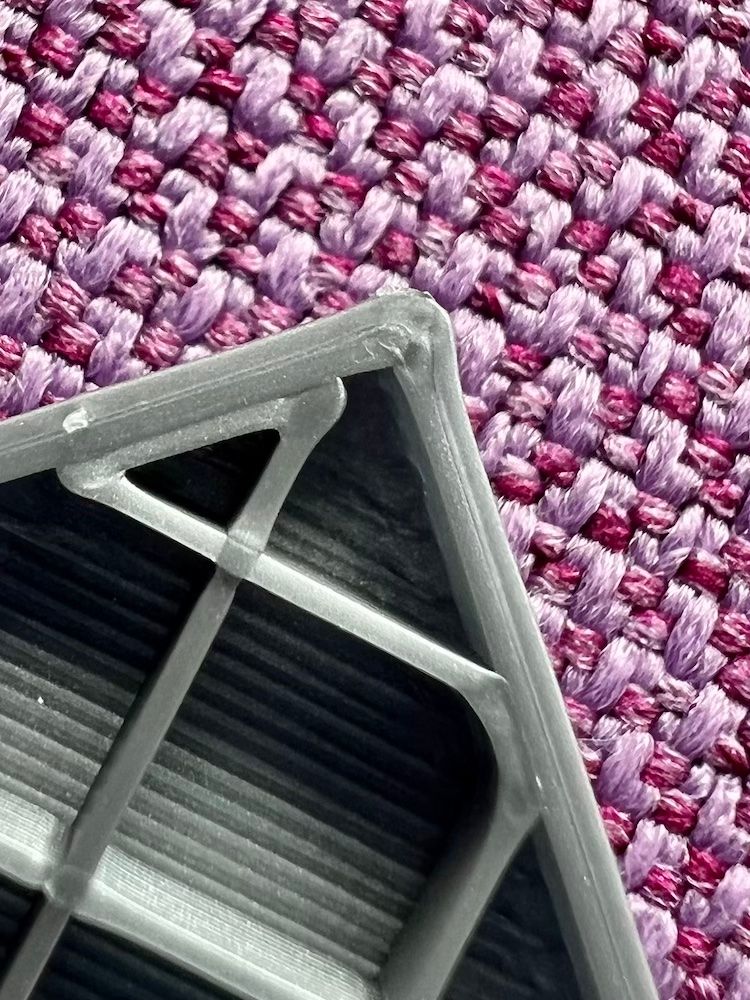
-
@argo That does seem to have made quite a difference at least to the infill so far. The only other thing I can think of as far as settings are concerned relates to retraction. This does play quite a big role in determining the quality of the line start which can otherwise make quite a big blob.
Depending on the slicer and the slice settings used you may find that a retract movement may or may not be accompanied by a corresponding unretract at the beginning of the next line (you will have to look at your gcode file to see). If the slicer does do a full unretract then you may find that this will cause a blob at the start of any line and you will not be able to control this with PA as that will only make the blob bigger while narrowing down the end of the line. What I have therefore found is that it is necessary to do a certain amount of retract at the end of a line without unretracting at the start of the next line. If you tune the amount of retract correctly (and ensure that it does not unretract) then you should more or less be able to prevent a blob from forming at the line start while using the PA to tune the line end and corners (as far as possible). I can't at this point explain why the above seems to be necessary, just that it does seem to be the case.
If I look at the last print you have shown above then it does look to me as if you have blobs forming at line starts on infill. It also looks like you have a line starting and ending at the corner junction of the inside perimeter but I cannot say for sure so maybe just check your slicer to see whether that is so.
If you can get rid of the blobs/excess line thickness at the start of a line in the above manner then it would give you a bit more freedom to further adjust your PA factor to optimize the line ends which may or may not improve the corners.
The above is all I can suggest at this point as far as settings go. If that does not sufficiently correct the problem then you are back to having to look at firmware or hardware.
-
@argo Do you have a picture of that cube showing a corner that is not at the start/end of the inner perimeter? Would be interesting to see what that looks like.
-
On the following picture you see a corner without retraction. This was also a very slow test at 40 mm/s to rule out overshooting corners caused by too high speed.
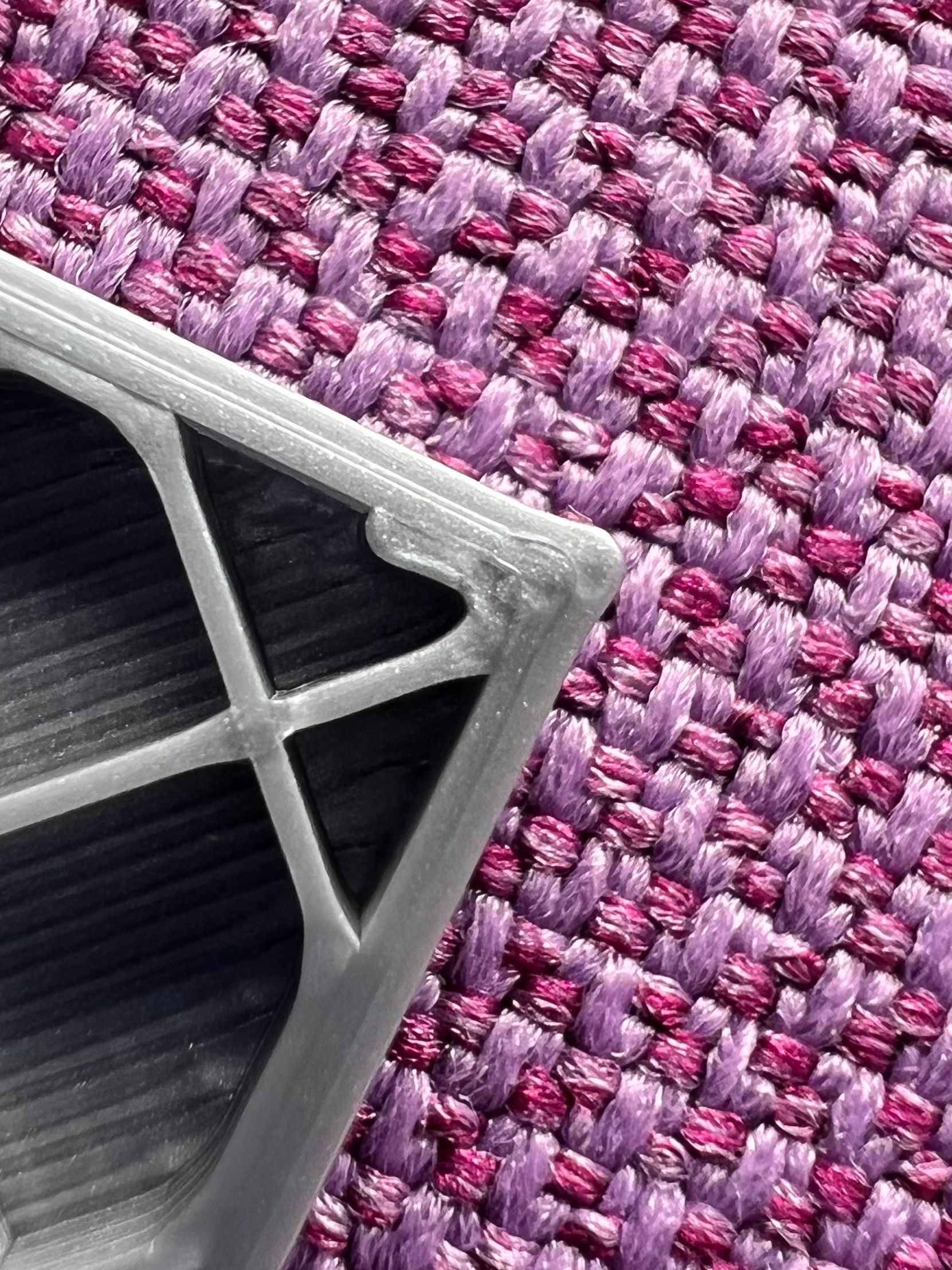
-
@argo I am not sure whether it is so clear from my previous explanation but what I mean is not to print without retraction but to use retraction together with a negative extra restart distance specified in your slicer. I know Simplify3D and PrusaSlicer do have these settings available but I am not sure about other slicers. Using this setting will result in a shorter unretract distance being used after any retraction has been done. This would help to narrow down the start side of any print line and therefore give you some additional scope for adjusting your PA settings for line ends or corners.
-
3 corners out of 4 never have any retraction with the test objects I print. Seam is set to aligned so the seam gets placed always at the same corner. To show that the retraction isn’t the culprit I showed one of the other corners which looks the same. This would with my understanding rule out retraction issues. Or did you mean something else and I misunderstood you?
-
@argo
My guess, after looking at the photos all once, is that the problem might be the value of the overlap between fill lines and outside perimeters set in the slicer.On all photos where the corner was pushed out, a fill line ends directly on that corner.
Here, Here and Here
Pay attention to this area in the last photo...
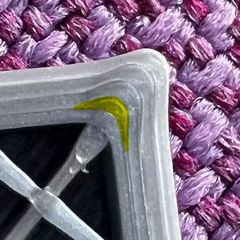
One (two ?) photo where it isn't is a Z-seam that has pushed the outside perimeter outwards.
HERE and probably also HERE !?So I would suggest... print the same rectangle WITHOUT the Infill to see if it could be due to the overlap of the infill and the outer wall.
Or change the percentage of infill so that the infill doesn't end up in the corners.If you compare the two pressure parts in the first photo, I would say that the flow is too high in the lower pressure part.
(The reason could be a different temperature or a different filament diameter or similar.)Therefore, determine the flow for the respective filament again and then determine the PA value again.
You suspect that the update of the RRF can be the reason for this problem.
Can you say with certainty that you used the exact same filament (same spool) and that ALL the settings were identical?
A filament can have a different diameter per spool.Because other people and even your other printer do not show these problems, I would assume that something has changed between these two printouts, except for an update of the firmware.
It's just my guesses.

Text was translated using Google Translate, so some sentences may be harder to understand.
-
He can repeat the test printing external perimeters first, to rule that out.
-
@ccs86 said in Issues with pressure advance since RRF 3.4:
He can repeat the test printing external perimeters first, to rule that out.
That would also be a possibility.
I would omit the infill completely for the test, then the result would be "unadulterated".
In my opinion, printing the outer walls before the infill would then be a refinement process to optimize the print. -
@norder said in Issues with pressure advance since RRF 3.4:
@ccs86 said in Issues with pressure advance since RRF 3.4:
He can repeat the test printing external perimeters first, to rule that out.
That would also be a possibility.
I would omit the infill completely for the test, then the result would be "unadulterated".
In my opinion, printing the outer walls before the infill would then be a refinement process to optimize the print.Why omit the infill? I thought one purpose of this testing was to confirm or deny that PA was working differently in his infill and perimeters?
If you print external perimeters first, they will not be influenced by the infill, or by perimeter overlap. This should show more directly how PA is handling these outside corners.
-
@argo said in Issues with pressure advance since RRF 3.4:
3 corners out of 4 never have any retraction with the test objects I print. Seam is set to aligned so the seam gets placed always at the same corner. To show that the retraction isn’t the culprit I showed one of the other corners which looks the same. This would with my understanding rule out retraction issues. Or did you mean something else and I misunderstood you?
I think you may have misunderstood me, but not to worry
 The only reason I am bringing up retraction (and more specifically negative extra restart distance when doing retractions) is because of the role that will play in trying to assess optimal PA factors and the PA factor in turn then would play a major role in limiting bulging at corners. The retraction settings mentioned before therefore end up playing only an indirect role in determining what can happen at corners. What I am aiming at is to try to get to the highest possible PA factor that will allow proper printing of infill but also produce the greatest reduction of bulging at corners.
The only reason I am bringing up retraction (and more specifically negative extra restart distance when doing retractions) is because of the role that will play in trying to assess optimal PA factors and the PA factor in turn then would play a major role in limiting bulging at corners. The retraction settings mentioned before therefore end up playing only an indirect role in determining what can happen at corners. What I am aiming at is to try to get to the highest possible PA factor that will allow proper printing of infill but also produce the greatest reduction of bulging at corners.At this stage it is a bit difficult to say from the last image posted whether there is still any scope for increasing PA. This is because when looking at the infill I can see that line starts are still wider than line ends. If the line start widths are reduced by adding a negative extra restart distance to retractions it will be easier to see from the line ends whether you can actually increase the PA factor any further.
-
@norder said in Issues with pressure advance since RRF 3.4:
@argo
My guess, after looking at the photos all once, is that the problem might be the value of the overlap between fill lines and outside perimeters set in the slicer.Good observation. It does look as if there may be an excessive infill overlap on the corner which may be pushing it out a bit. If you get your line starts and ends printing correctly then you should also be able to reduce the infill overlap you are using without running into problems with infill not connecting to the perimeter.
-
@ccs86 said in Issues with pressure advance since RRF 3.4:
Why omit the infill? I thought one purpose of this testing was to confirm or deny that PA was working differently in his infill and perimeters?
If you print external perimeters first, they will not be influenced by the infill, or by perimeter overlap. This should show more directly how PA is handling these outside corners.I wanted to get to the bottom of the problem of the bulging corners, but the PA doesn't interest me at first.
Even if the outer walls are printed first, it can still happen that when the infill is printed, the wall can be deformed as it might still be soft, especially when printing very quickly.
And in order to eliminate all these possible falsifications from the outset, one should print without infill.
Which really shouldn't be a problem.If the corners then look the way you want them to, you know where the error is and you can try to optimize them with some settings in the slicer, for example by printing the walls before the infill or by setting the infill so that the corners are not deformed can etc. pp
Text was translated using Google Translate, so some sentences may be harder to understand.
-
I’ll just do both tests.
One without infill and one with the setting „perimeter first“.
But I’m away from my printer right now until tomorrow. So please be patient >) -
Printed all three test object at once. PA was set to 0.055 which is a bit too high imo (see infill lines) but infill / perimeter quality is always a compromise and I try to favour perimeters in this case. Input Shapers are off btw. Enabling those and things get even uglier.
Standard settings:
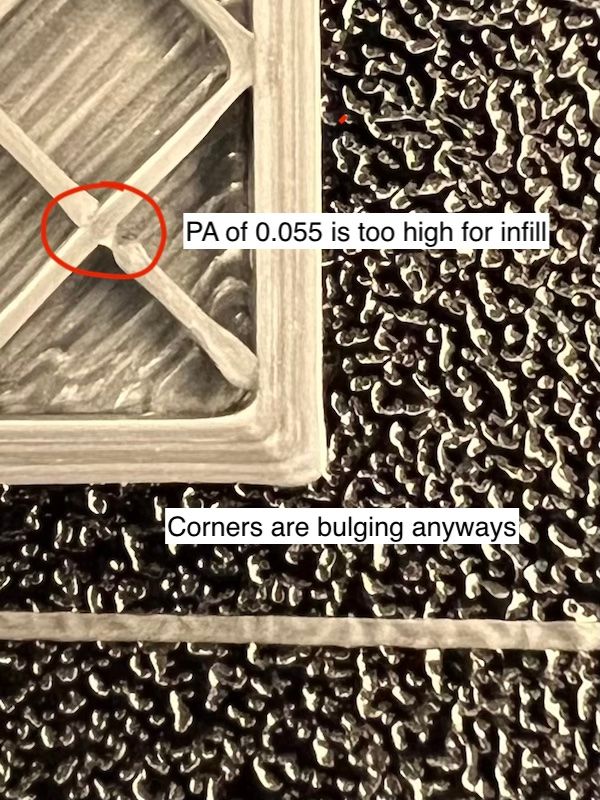
Test object without infill:
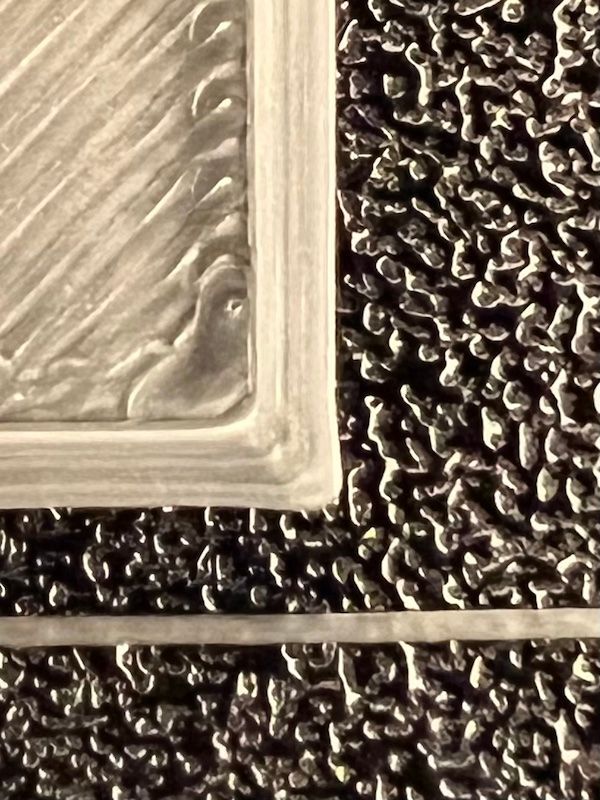
Test object with setting "perimeter first":
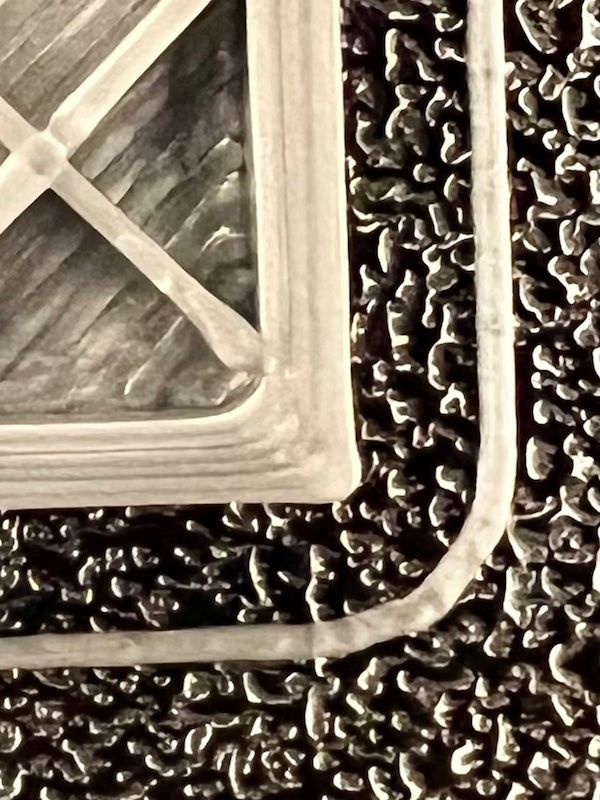
-
@argo why do you point at the infill intersection break as evidence for PA tuning? There is no PA action at that point, since those are uninterrupted straight lines, which cross.
More important would be at changes in direction, but it would be much more helpful if you labeled the direction of travel for each infill line you are considering, since without it you can't guess.
-
Because it’s a very good indicator to rate infill quality. At the end PA is a compromise between infill and perimeter quality.
One last example with input shaper enabled to show how much it decreases quality further:
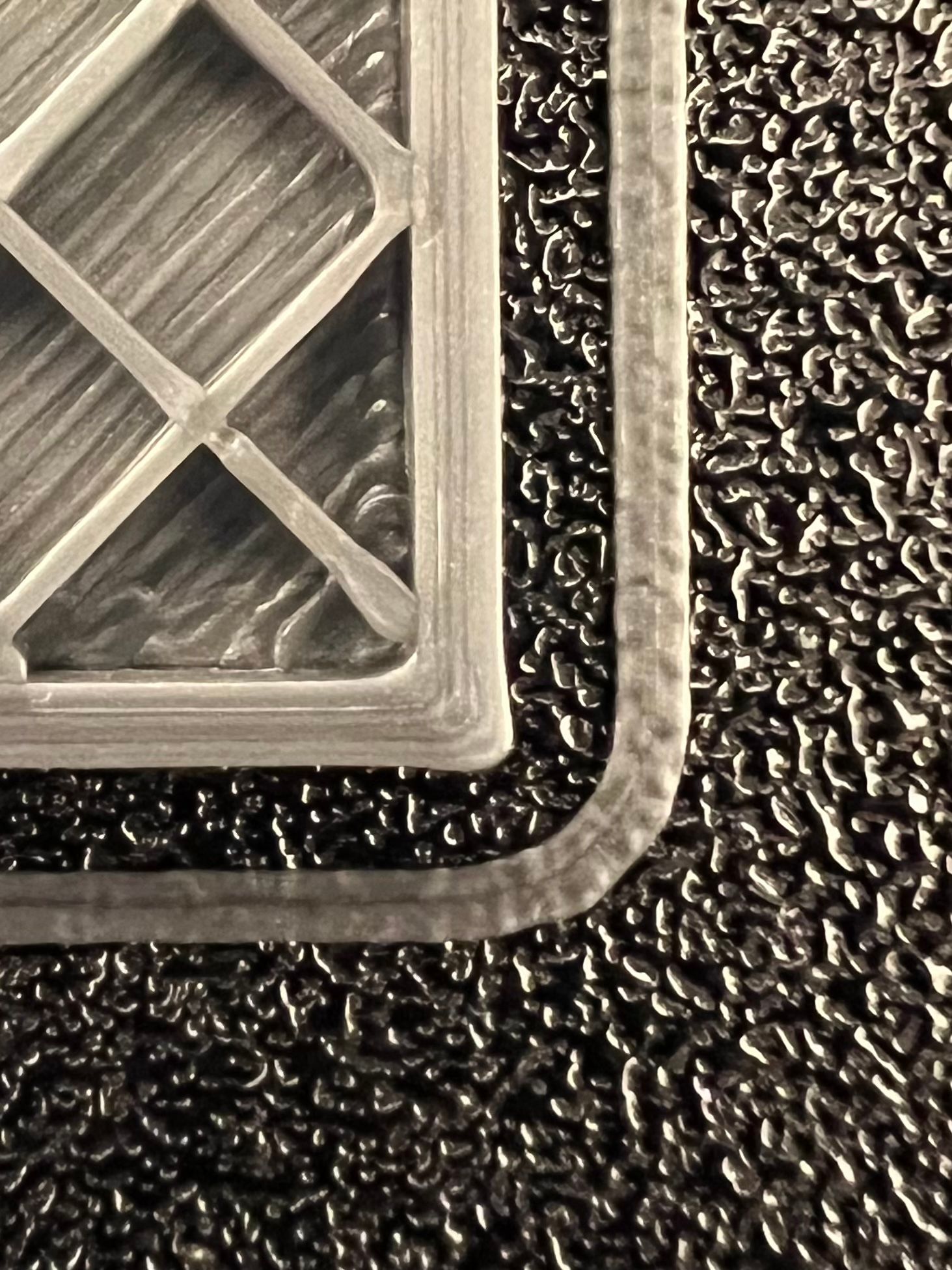
For me the test and demonstration journey ends here. I could wire the extruder Motor directly to the board though so it does not run over CAN but I feel tired testing and experimenting for now.
Until I enjoy experimenting again there is hopefully something that might be a fix or I’ll switch over to Klipper. -
That looks a lot better.
Outside perimeter first and not letting the fill lines end right in the corners delivered a wonderful result.
To me it's proof that the extreme bulging was caused by the fill lines ending right in the corners.If you have time and desire to further optimize your printer, turn the IS and PA OFF and first take care of the right flow for each filament you use.
A flow that is ideal for all filaments is rather unlikely.In this photo it is wonderful to see that the flow is set too high.
(Note the flat surface, it is very uneven, a sign of too much flow)When you set the flow, start at the beginning... extruder steps... filament diameter... test cubes (Link see below) with 100% flow and 100% infill... measure the wall thickness and convert the 100% flow into the correct percentage.
If the flow is right again, which it isn't right now, then the appearance of the corners will improve as well.
Test cube (20mm x 20mm x 20mm) with four walls of different thickness (0.4mm / 0.8mm / 1.2mm and 1.6mm), ideal for calculating the flow.
Calculation of the flow based on the wall thickness...
We know how thick the walls are ideally... if we measure 0.46mm for the 0.40mm wall, for example, then we calculate...
0.40 x 100 / 0.46 = 86.95NOMINAL value (0.4mm) multiplied by 100 (100%) divided by ACTUAL value (0.46mm) equals new value (86.95%) for the flow
The new value for the flow in the slicer would be exactly 86.95%.
I would enter 0.87 in the slicer and use this value to print the cube again and measure again.
Then break the cube to possibly set 0.9 in the slicer if the cube or the 0.4mm wall doesn't seem stable enough to me.The feeling plays a role here.
P.S.:
And only when the flow is optimally set for the respective filament would I determine the value for the PA.In the PrusaSlicer you can set the flow for each filament and also the PA value.
For me there is also the information how strongly each of the filaments pulls together in order to set an oversize in the slicer if I want to have exact printed parts.Google Translate
--- Original Text ---Das sieht doch schon viel besser aus.
Außen-Perimeter zuerst und die Fülllinien nicht direkt in den Ecken enden lassen hat doch ein wunderbares Ergebnis geliefert.
Für mich ist es der Beweis das die extremen Auswölbungen von den Fülllinien die direkt in den Ecken enden, verursacht wurden.Wenn Du wieder Zeit und Lust hast Deinen Drucker weiter zu optimieren, dann stelle das IS und das PA AUS und kümmere Dich zuerst um den richtigen Fluss für jedes Filament was Du nutzt.
Ein Fluss der für alle Filamente ideal ist, ist eher unwahrscheinlich.Auf diesem Foto ist wunderbar zu erkennen dass der Fluss zu hoch eingestellt ist.
(Achte auf die ebene Fläche, sie ist sehr uneben, ein Zeichen für zu viel Fluss)Wenn Du den Fluss einstellst, dann fang ganz vorne an... Extruder-Stepps... Filamentdurchmesser... Testwürfel (Link siehe unten) mit 100% Fluss und 100% Infill... messen der Wandstärke und umrechnen des 100% Flusses in die richtige Prozentzahl.
Wenn der Fluss wieder stimmt, was er momentan nicht macht, dann verbessert sich auch das aussehen der Ecken.
Testwürfel (20mm x 20mm x 20mm) mit vier unterschiedlich dicken Wänden (0,4mm / 0,8mm / 1,2mm und 1,6mm), ideal um den Fluss zu berechnen.
Berechnung des Flusses anhand der Wandstärke...
Wir wissen wie dick die Wände im Idealfall sind... messen wir zB für die 0,40mm Wand 0,46mm, dann rechnen wir...
0,40 x 100 / 0,46 = 86.95SOLLWert (0,4mm) multipliziert mit 100 (100%) dividiert durch ISTWert (0,46mm) gleich neuer Wert (86.95%) für den Fluss
Der neue Wert für den Fluss im Slicer wäre exakt 86.95 %.
Ich würde 0.87 im Slicer eintragen und mit diesem Wert den Würfel noch einmal drucken und erneut messen.
Danach den Würfel zerbrechen um eventuell 0,9 im Slicer einzustellen, falls der Würfel bzw die 0,4mm Wand mir nicht stabil genug erscheint.Hier spielt das Gefühl etwas mit.
P.S.:
Und erst wenn der Fluss optimal eingestellt ist für das jeweilige Filament, würde ich den Wert für das PA ermitteln.Im PrusaSlicer kannst Du für jedes Filament den Fluss festlegen und auch den PA Wert.
Bei mir steht dort auch die Info wie stark sich jedes der Filamente zusammen zieht, um im Slicer eine Übergröße einzustellen wenn ich exakte Druckteile haben möchte. -
Sorry don’t get me wrong but I’m tired running in circles here. The printer is calibrated and PA does not work for me right now.
I have explained enough and posted many examples and answered every question several times. It is not the extrusion multiplier and it is not a slicer setting nor the slicer itself.
It is how PA works right now. I have asked for pictures from a printed rectangle in the Voron RRF discord and have not seen one print example from others that do look perfect in my eyes. Only answer I got was that RRF has different priorities than looking at corner quality with a magnifying glass.
Enabling input shaper and the quality gets worse, not only for me.
So yes, maybe I’m too picky but I know what my others printer can do especially that one that doesn’t run RRF.
That is why I end it here. If there is promising FW fix in the following weeks that promises PA improvements I’ll try that out. If not I’ll have a small little project to come for the winter season.